- Home
- Robert Graysmith
Zodiac Unmasked: The Identity of America's Most Elusive Serial Killers Revealed Page 34
Zodiac Unmasked: The Identity of America's Most Elusive Serial Killers Revealed Read online
Page 34
The note Sent to the Post not to any of
The San Francisco Zodiac letters you are
Wrong the hand writing is different it is
One of the same Zodiac one Zodiac
In San Francisco killed a man in the park with a
gun and killed a woman with a knife and killed
a man in the taxi cab with a gun”
“It was obvious from looking at the letter,” said Post reporter Kieran Crowley, “that Zodiac was anxious to convince everyone that he was the same Zodiac who had killed people in California years before.” Crowley wrote:
“Below the diatribe was a drawing of a chubby Zodiac in a square-topped executioner’s mask, with his symbol emblazoned on his chest. To the right he declared: ‘Me in the park; is this similar no; One Zodiac.’ This was getting interesting. If the California Zodiac had come to New York, it was an incredible story. In fact, it was too good to be true. . . . He wanted us to think he was a heavy-set, middle-aged white guy from San Francisco. Or did he actually believe that he was the California Zodiac reincarnated? The incidents he described, especially the drawing of Zodiac in his executioner’s mask, were directly from the Graysmith Zodiac book. Graysmith, when I reached him by phone in California, was appalled that someone was apparently using his book as a blueprint for occult murder. The former political cartoonist for the San Francisco Chronicle said his illustration of the original Zodiac in a hood appeared only in his book.”
Crowley reached me at home. “Oh, my God, I feel terrible,” I told him. “This is a copycat and not the same guy as ours. When I first heard about the shootings in New York, I checked up on a Zodiac suspect here who had never been charged. He is still here.”
Another reporter wrote: “Fearful New Yorkers are snapping up copies of Zodiac, the 1986 bestseller about a Bay Area serial killer,” “Graysmith, who spent ten years researching the book, is horrified that it might have become a how-to manual for terror, a macabre guidebook.” “I hope it isn’t so,” I told him too. “I waited a long time after Zodiac ended his killings before writing this book for just such a reason.”
Monday, June 25, 1990
Jewelers saw sales of birthstones plummet as New Yorkers pondered how Zodiac had known his victims’ signs. NEWS REPORT:“Police are telling people not to tell strangers their birthday. Four people have been shot, targeted for their astrological signs. Today one of them [Joseph Proce, his third victim] died. The gunman claims to be the Zodiac Killer of San Francisco fame in the late sixties, but police don’t believe it. Meanwhile fifty New York detectives are on the case, the tabloids are going crazy and presumably New Yorkers are even more wary of strangers than usual.”
“The computerized system,” Police Commissioner Lee Brown reassured the public, “enables us to make sure we capture all the tips, all the information that comes in and gives us a chance to pull it up rapidly. The system employs a light scanner that permits clerks to feed information from incoming calls directly into the computer for handwritten notes.”
Zodiac II wrote, “Only Orion [The Hunter] can stop Zodiac and the Seven Sister. No more games, pigs.” A map published in the the Daily News overlaid a diagram of the Orion constellation upon a map of the city. The first three shootings in Brooklyn lay over the part of the constellation known as Orion’s belt.
Thursday, June 28, 1990
One man, his symbols, drawings, and letters identical to Zodiac’s, brought New York to its knees. Such deadly imitation was unprecedented. I flew to New York, checked into the Omni, and visited the crime scenes. The press followed me, slipping so many notes under my door, I could barely open it. The city was terrified. Mike McAlary wrote in his column:“I met with Robert Graysmith, a former San Francisco newspaper guy. Graysmith spent ten years investigating San Francisco’s Zodiac serial killer. The original Zodiac was a much more lethal guy, Son of Zodiac. No one knows more about the original Zodiac than Graysmith. Son of Zodiac has obviously read Graysmith’s book cover to cover. He is using the tome as a guidebook to murder . . . trying his best to imitate the original Zodiac’s penmanship. They write in the same poor black lettering. . . . Beware . . . We live in the age of cheap sequels.”
“We have looked at that book,” said Borrelli. “The New York Zodiac killer probably has too. Investigators assigned to the Zodiac task force believe the gunman stalking New York City had read and copied parts of Graysmith’s book.” Warren Hinckle in the Examiner said, “Borrelli, who follows Graysmith’s bible as religiously as does his quarry, has ruled him a copy of the original Zodiac.”
A news anchor, her cameraman, and I headed into Central Park in Manhattan. Taking one twisting turn after another, we neared Literary Walk near 72nd Street on the east side. Nobody would be in Central Park at midnight but the extraordinarily foolish and Zodiac. We discussed the case on the bench where Parham had been shot. New York Hospital doctors still had the former Fort Greene resident on a respirator in their trauma unit. The lights above the band shell cast long shadows across the wooded path, as silent and dark as Lake Herman Road or Blue Rock Springs. I gave the interview looking over my shoulder. “We dug a round out of that park bench,” Ciravolo told me. “We found a thumbprint on the bottom right-hand corner of his note. The park victim described a man who looked like [TV weatherman] Al Roker. It was of a guy who had asked for his birthday, not the shooter. When you press detectives for a composite sketch to please the press, mistakes like that happen. The sketch was wrong and we knew it. By then it was a citywide case, not just capsulized on the Brooklyn-Queens Border. So that’s when we had forty-nine detectives and went at it the whole summer. Every twenty-one days when it would fall on a Thursday we’d go out there with a small army in Manhattan, Queens, and Brooklyn.”
As I left to go to the airport, I saw police searching Central Park, the crisp darkness lit by flashing red lights. A female worker and her friends at the airport thanked me for coming to New York to help. That alone made the trip worthwhile.
Thursday, July 12, 1990
“Zodiac uses the trains. We’re sure of that,” said the police, formulating plans to shut down the subways and trap him if he struck again. Cops cuffed a subway fare-beater after they found a city map covered with Zodiac symbols in his pocket. Hundreds of officers anxiously waited for Zodiac II to strike on his preordained day. “We had in excess of 150-200 bodies,” Ciravolo said, “a million supervisors—the overtime was astronomical. At one point we had a hot line set up. It looked like a Jerry Lewis Telethon. We had ten cops who were on limited duty—you know, broken wrist, broken ankle, just sitting there taking phone calls from the public—in excess of ten thousand telephone tips. Each one was checked out. When each one was checked out we went through the book again. And guess what? Zodiac went under. He wrote a few notes, taunting us—‘more games, pigs. I’ve seen you out on Eldridge Lane looking for me, you are not good. You will not get the Zodiac.’
“He wrote things such as this: ‘This is the Zodiac. The first sign is dead. The Zodiac will kill the twelve signs in the belt when the Zodiacal light is seen.’ We were looking at this note for months and were asking what the fuck is the ‘Zody-acal light’? I called NASA and I said, ‘Excuse me, Mr. Scientist. Is there such thing as the Zody-acal light?’ ‘No,’ he says, ‘but there is the Zo-die-ical light.’
“ ‘What the hell is that?’
“‘Well, it’s refracted particles of dust coming off refracted sunlight, but you can’t see it in big cities. You can see it down in the Caribbean and on a clear night right at dusk.’
“‘When do you see the Zodiacal light?’ I asked.
“‘Twice a year. It comes out early in October and it comes out again in March.’13
“So this guy started shooting people in March, then he stopped. We got this October coming up, so it’s going to be interesting to see if he comes back. He also said, ‘Orion is the one who can stop Zodiac and the seven sister,’ which is Pleiades, which is another constellation. Out of the four
people he shot, he shot all of them in the torso—never any head shots, and three of the four survived. One guy has a round still in him. It’s still too close to his spine to remove.”
Thursday, August 16, 1990
I returned to New York, staying at Days Inn on 57th Street and wandering the streets in early morning. A garbage strike was in progress. Heaps of refuse, blurry with flies, mounded each corner. Zodiac victim Darlene Ferrin’s sister, Pam, stepped daintily over the trash, lifting the low hem of her silky dress. She appeared on the Sally Jesse Raphael Show and told how Zodiac had changed her life. A man, she reported, tried to pull her car keys from her ignition in front of an Antioch, California, store. He brandished a knife and threatened to abduct her, but she escaped after a struggle. Local police had been skeptical of her earlier reports of death threats—a note pinned to her front door that read “187” [187 is the California Penal Code section dealing with homicide], a coffin delivered to her door, a cross planted on her lawn, and teddy bears with knives stuck in them left on her steps. Antioch Police Sergeant Bob Lowe denied they had dismissed Pam’s previous complaints. “Any and all reports of that nature are always taken seriously,” he said. Vernon Hockaby of Antioch was more irate. He wasn’t related to Pam, but hundreds of callers had phoned his number during the last year.
After making good on a third of his threats, Zodiac II vanished just as the original had. “We went at it for about nine or ten months,” Ciravolo told me, “until Chief of Detectives Borrelli disbanded it.” Vallejo Detective Bawart, still on reserve to help the VPD solve complex homicides, said, “Zodiac’s success in his killing and the success of most serial killers are that they have no connection with their victims. Psychopaths like this usually outgrow it in their later years and later life.” Was this the case with the New York copycat? Had he outgrown his rage, gone underground?
In the interim, I learned Leigh Allen was going blind.
25
arthur leigh allen
Thursday, October 11, 1990
Allen’s deteriorating vision, a side effect from diabetes mellitus and arteriosclerotic heart disease, had seriously impeded his activities. Though his kidneys were failing, Leigh ignored his doctor’s advice to curtail excessive fluids and watch his weight. As mental acuity decreased, he experienced occasional muscle cramps, flank pain, and muscle twitching. His skin took on a slightly yellow-brownish discoloration. Inside, healthy as ever, anger still blazed.
Long after Allen’s release from Atascadero, a staffer, consumed with worry, contacted me. “Is Arthur Leigh Allen still alive and if so is he still a Zodiac suspect?” he asked. Apparently Leigh had told the Atascadero staff he was a Zodiac suspect. “To your knowledge, have there been subsequent child molestation charges brought against this man? It is recognized in the mental health field that child molesters are notorious recidivists. The molesters I’ve worked with have been repeat offenders.” Nor, with the passing of years, had the suffering of the victims lessened. Psychic trauma had especially been visited on the surviving Blue Rock Springs victim—Mike Mageau [May-hew], last seen in a Vallejo hospital on August 19, 1969.
Though his operation had been on July 5, scars on the right side of Mike’s neck and left cheek shone lividly, mapping a bullet’s wandering path. He was a study in agony—jaw wired shut, left leg encased in a cast to his hip; right arm and hand crippled by bullets—as he stared at a slug, floating in a solution in a glass bottle. That slug had been removed from his left thigh. As soon as he could, he disguised himself and fled Vallejo.
“About one and a half years ago,” a male nurse in San Bernardino told me, “I saw Michael Mageau as a patient for multiple medical problems that appeared to be psychosomatic, probably secondary to the psychological scars he received as a result of his encounter with Zodiac. He freely volunteered his association with Zodiac and had scars consistent with the described wounds. As I recall he had a run-in with drugs and was a street person briefly. I met his fiancée, who is a strong woman and seemed to be giving him emotional and physical support. They are probably married now. He told me that [Lake Berryessa victim] Bryan Hartnell was living in the area and that he had some infrequent contact with him. I find it interesting that both Zodiac survivors now live in the area where the Zodiac murders began.” Hartnell had described Zodiac as 225-250 pounds. Mageau’s first description was similar—the man’s build was “beefy, heavyset without being blubbery fat.” He appeared to have “a large face” and was not wearing glasses. “He weighed 195-200 pounds and was between twenty-six and thirty-six years old. He was wearing a blue short-sleeved shirt.” That sounded a lot like the prime suspect.
On this twenty-first anniversary of Paul Stine’s murder, Dave Toschi said, “I retired in 1985 without having the pleasure of reading [Zodiac] his rights. Zodiac was the most baffling murder case in our history.” With coast-to-coast Zodiacs at large, it seemed unthinkable that the original Zodiac could let such an opportunity go by without commenting on his New York counterpart. Only the most extreme adversity could prevent this prophet of death from gloating over the proliferation of his obscene word. No letter came. Why?
Tuesday, December 18, 1990
Leigh Allen mentioned the Zodiac imitator to his friends. But he had other things on his mind. I was in Vallejo when, on the morning of his birthday, he donned a sweater his mother had knitted, buttoned his Navy pea coat, and drove to DMV to apply for a two-year renewal of his Class C driver’s license. 14 The new license stipulated “RSTP: Corr Lens,” but in his driver’s photo Leigh is not wearing glasses. He cruised the water town in his VW, finally parking at a golf course. I saw him turn up his collar against the wind, as he studied Water Town. I knew he was intimate with all its watery sections and salt flats. Lake Chabot Reservoir sprang from a dammed stream a hundred years ago. Then a storage cistern in Wild Horse Valley, twenty-two miles northeast, began pumping water to Fleming Hill reservoir. Today, the Gordon Valley project and Cache Slough Pumping Plant slaked Water Town’s endless thirst. His eyes roved across the choppy bay, where the hunt for Zodiac proceeded.
Allen was now undergoing kidney dialysis and suffering from diabetes. He walked with a cane, had a heart condition—possibly a circulation problem, and suffered from severe arthritis. Zodiac’s withdrawal had been as mystifying as his arrival. When he had appeared twenty years ago, there really hadn’t been anything like Zodiac before. He had captured the public’s enduring interest. “Zodiac was one of the early serial killers to acquire publicity,” said Park Dietz of UCLA. “The use of a logo and encrypted messages made him both well-marketed and of interest to legions of people who would like to solve the mystery.” So did the astrology angle.
Zodiac buff David Rice did a breakdown of Zodiac’s significant dates, but saw no astronomical pattern. He suggested to me there might be an astrological pattern, though, and on his computer, analyzed his findings with an Astr-5-Ø, Tropical Zodiac program.
“If Zodiac were using astronomical events such as the Winter, Summer, Spring, and Fall Solar Ingresses,” he explained, “it would seem likely that he would ‘do his thing’ on the exact day, and not plus or minus 13 days. Not even if he were using the Sidereal Zodiac, which is considered (with an SVP at 28 Pisces) to have a difference from the Tropical Zodiac of 28 degrees (there’s still about two degrees to go before the ‘Age of Aquarius’ replaces the current ‘Age of Pisces’), as it would still be off. There might be an explanation, however. Statistical analysis on athletes, using the Tropical Zodiac, placed Mars at the Ascendant (rising) and the Midheaven (culminating) more often than chance allows, at the oh-five level. Doctors and lawyers have Jupiter in these ‘zones’ instead. Though an astrologer, I’d prefer an astronomical explanation to an astrological one. The former one can weigh and measure, the latter is allegory and probabilities.”
Like the original Zodiac, New York’s copycat serial killer had vanished without a trace. I prayed for a resolution to the East Coast mystery. It would dispel half the nightm
are. In history only Jack the Ripper had his copycats—and now, Zodiac did too.
26
zodiac II returns
Though the solution to Zodiac II lay years away, let me tell you how it ended—as it began, in a blaze of bullets. On Tuesday, March 1, 1994, New York City police arrested a young man who “wouldn’t hurt a fly,” packing a homemade weapon. They automatically fingerprinted anyone with a zip gun because Zodiac II had used one. But the gun didn’t work, so cops sealed the young man’s file with the prints still inside. He returned to his Pitkin Avenue neighborhood, where he was known as “The Vampire.” Obsessed with all things military, “The Vampire” collected martial hardware and acted on occasion as a police drug informant. By day, he closeted himself in the nearly abandoned East New York apartment building he shared with his mother and sister and some squatters. He raged against drug users who trafficked the squalid building. By night, he wandered the streets, his Bible clutched under his arm.
“Your Zodiac, I think, is going to be caught,” I said on Ted Koppel’s Nightline. “I have had that feeling from the very beginning. He has already been seen by more people than ever saw the original Zodiac.” Jerry Nachman, on the same program, made an interesting point on behalf of the press. “We don’t create these situations. The Zodiac had shot two or three people before story one appeared. Son of Sam had murdered between a third to half the number of people he would ever kill before the first Son of Sam story appeared. So, it is not as if it is a chicken and egg thing. Sometimes these crimes have been unspooling for a while before we ever get notified of them or, indeed, get into them.”

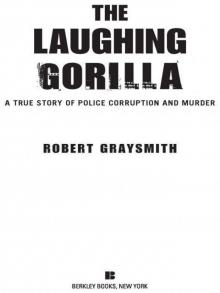 The Laughing Gorilla: A True Story of Police Corruption and Murder
The Laughing Gorilla: A True Story of Police Corruption and Murder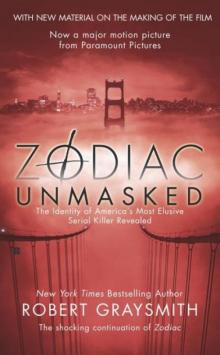 Zodiac Unmasked: The Identity of America's Most Elusive Serial Killer Revealed
Zodiac Unmasked: The Identity of America's Most Elusive Serial Killer Revealed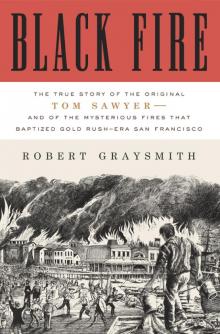 Black Fire: The True Story of the Original Tom Sawyer
Black Fire: The True Story of the Original Tom Sawyer Zodiac Unmasked: The Identity of America's Most Elusive Serial Killers Revealed
Zodiac Unmasked: The Identity of America's Most Elusive Serial Killers Revealed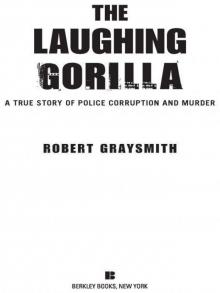 The Laughing Gorilla
The Laughing Gorilla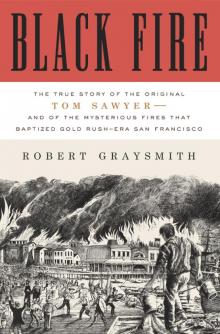 Black Fire
Black Fire